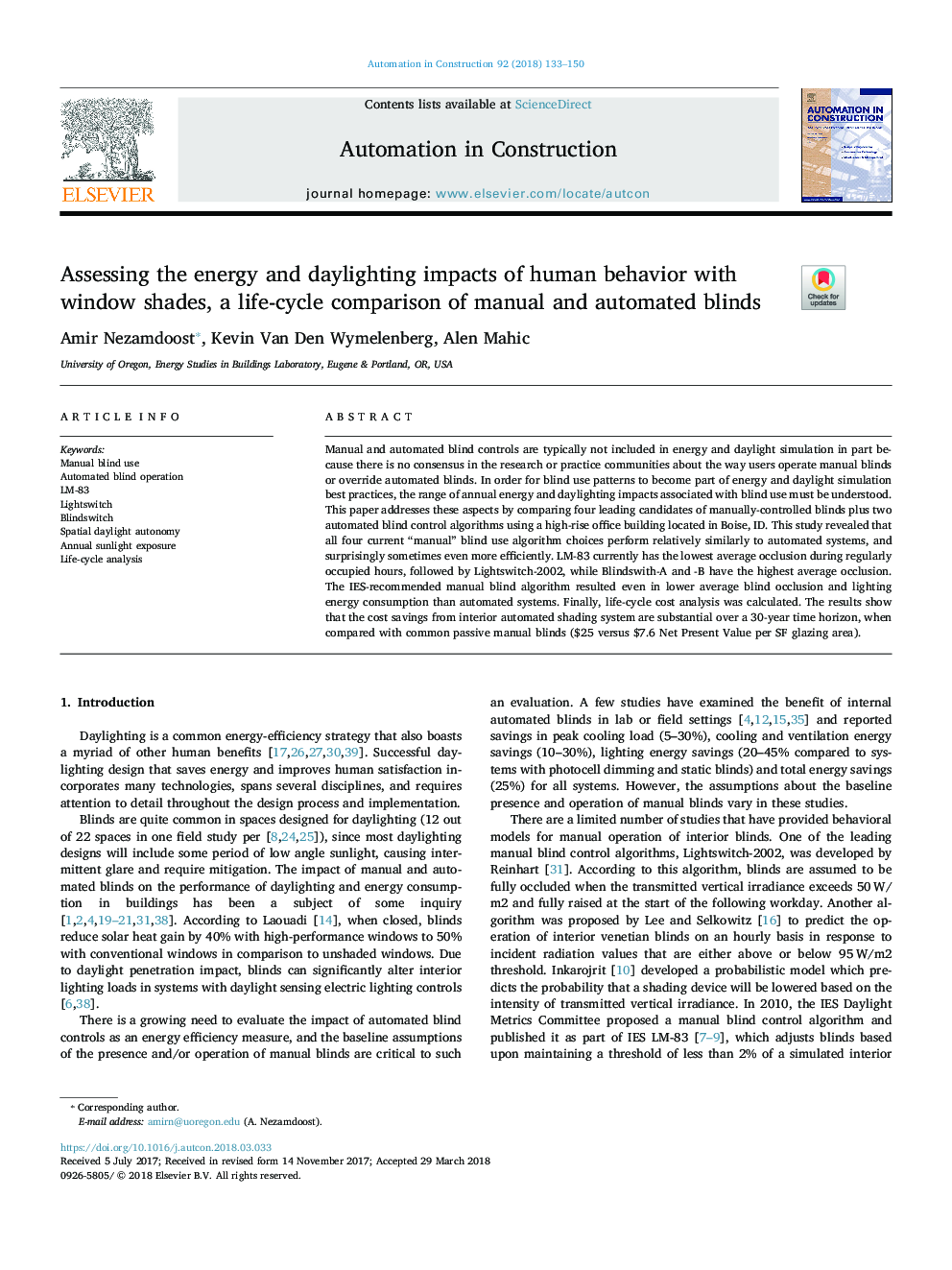| کد مقاله | کد نشریه | سال انتشار | مقاله انگلیسی | نسخه تمام متن |
|---|---|---|---|---|
| 6695408 | 1428271 | 2018 | 18 صفحه PDF | دانلود رایگان |
عنوان انگلیسی مقاله ISI
Assessing the energy and daylighting impacts of human behavior with window shades, a life-cycle comparison of manual and automated blinds
ترجمه فارسی عنوان
ارزیابی اثرات انرژی و نور روز از رفتار انسان با سایه پنجره، مقایسه یک دوره عمر پرده دستی و اتوماتیک
دانلود مقاله + سفارش ترجمه
دانلود مقاله ISI انگلیسی
رایگان برای ایرانیان
موضوعات مرتبط
مهندسی و علوم پایه
سایر رشته های مهندسی
مهندسی عمران و سازه
چکیده انگلیسی
Manual and automated blind controls are typically not included in energy and daylight simulation in part because there is no consensus in the research or practice communities about the way users operate manual blinds or override automated blinds. In order for blind use patterns to become part of energy and daylight simulation best practices, the range of annual energy and daylighting impacts associated with blind use must be understood. This paper addresses these aspects by comparing four leading candidates of manually-controlled blinds plus two automated blind control algorithms using a high-rise office building located in Boise, ID. This study revealed that all four current “manual” blind use algorithm choices perform relatively similarly to automated systems, and surprisingly sometimes even more efficiently. LM-83 currently has the lowest average occlusion during regularly occupied hours, followed by Lightswitch-2002, while Blindswith-A and -B have the highest average occlusion. The IES-recommended manual blind algorithm resulted even in lower average blind occlusion and lighting energy consumption than automated systems. Finally, life-cycle cost analysis was calculated. The results show that the cost savings from interior automated shading system are substantial over a 30-year time horizon, when compared with common passive manual blinds ($25 versus $7.6 Net Present Value per SF glazing area).
ناشر
Database: Elsevier - ScienceDirect (ساینس دایرکت)
Journal: Automation in Construction - Volume 92, August 2018, Pages 133-150
Journal: Automation in Construction - Volume 92, August 2018, Pages 133-150
نویسندگان
Amir Nezamdoost, Kevin Van Den Wymelenberg, Alen Mahic,
